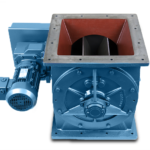Can you describe Bopp’s celluloid collection?
To make BOPP films, polypropylene film is stretched in both the machine and transverse directions at the same time. In addition to packing and labeling, BOPP film may also be laminated. Due to their inherent moisture barrier qualities, sealability, superior clarity and graphic reproduction, retail appeal, and single-layer/homogeneous structure, BOPP Films are the optimum substrate for worldwide food packaging.China Bopp thermal lamination film suppliers are one of the best high-quality Bopp film providers. Due to its co-extrudability, heat-sealability, and reversibility, it is widely used in the food packaging industry. Its low density of 0.55 and compatibility with PP recycling bins make it a desirable material for labels. As the flexible packaging industry grows, so does the need for BOPP films throughout the globe. There are several benefits to BOPP.

BOPP film has several benefits, including those listed below
1. BOPP films have a higher moisture barrier than typical plastic films, and their metalized variation has an even higher oxygen barrier. This allows the product to be stored for longer. The food packaging industry may greatly benefit from BOPP films due to the oxygen barrier and moisture barrier qualities that these films provide.
2. BOPP film’s narrow gauge dispersion and barrier qualities combine to provide a high-quality seal. Thermal seals for food packaging benefit from a broad sealing window, low seal initiation temperature, high strength, and ease of machining.
3. BOPP film is a more eco-friendly plastic film substrate than polyester due to its reduced carbon load. Because of its eco-friendliness, BOPP film has overtaken cellulose as the most popular substrate for flexible food packaging. Its low melting point means it can quickly transform into a liquid with little effort. Many typical consumer and automotive products utilize recycled BOPP resin grains in their construction.
4. Incorporating appealing images to boost the visual appeal of product packaging is made possible by the high transparency of transparent BOPP films. High-quality halftone and multicolor printing are also possible with this film. This kind of white opaque film is very unclear, has an extremely bright white color, and shines exceptionally well. Metalized films in various shiny sheens give your merchandise an edge. When the surface tension is high, additional post-lamination operations, including foil imprinting, UV spot coating, and embossing, may improve the aesthetic appeal of product packaging.
5. The density of BOPP films sets them apart from other types of flexible packaging films. Less plastic is needed to get the same results because of the positive correlation between low density and high conversion yield. The low-density plastic film’s less weight per unit of length may make it more convenient to carry than heavier plastic films.
What are the key differences when comparing PP, CPP, OPP, and BOPP?
Polypropylene is thought to be a thermoplastic semicrystalline polymer with a petroleum origin. Containers and receptacles from it are widely used in the car sector to store and transport various parts and pieces.
Cast polypropylene (CPP) describes its non-oriented manufacturing process. Compared to BOPP, its resistance to penetration and impact is far higher. CPP is often used as the interior web in the lamination to provide BOPP with better sealing ability. It has operated in retorting and other packaging processes that need high temperatures. From China CPP film suppliers, the best high-quality CPP film is found.
The material known as Oriented Polypropylene (OPP) has expanded in scope.
BOPP, or Biaxially Oriented Polypropylene, improves the procedure by stretching the material in two directions—this sturdy, translucent film guarantees compatibility with all packaging automation processes.
Foods packaged with Bopp film:
Each BOPP sheet has its unique look and features depending on its categorization, visuality, and barriers, much like any other packaging sheet lamination. Adhering parts together offers up almost infinite possibilities for use. In laminating, solvent-free glue is used. BOPP film is available in many finishes and may be used for various purposes.
BOPP has a clear, high-gloss surface, is hermetically sealed, and is an excellent vapor barrier; its thicknesses range from 20 to 50 microns. Suitable for one laminating only. This provides a framework for the rest of the parts.
BOPP solid white:
This material is an excellent substrate for flexographic and rotogravure printing because of its white look, high sheen, and suitability for mono lamination.
BOPP metalized is ideal for food preservation and protection because it forms a considerable barrier against oxygen, air, and moisture.
BOPP Matt is a more stylish alternative to standard glossy plastic bags and packaging due to its matte outside surface.
BOPP that is anti-mist (or anti-fog) inhibits ‘fogging’ on the internal surface of the package by being incorporated into the product rather than covered as a coating, increasing shelf life and keeping a fresh look.
BOPP White Metallized:
This film is metallic on one side and white on the other, providing superior barrier qualities and a suitable print base without excessive volumes of white ink.
This film’s pearly white tint and high sheen make it perfect for patisserie displays and high-end food packaging. In addition, it speeds up the cavitation process, which reduces the density of the material.
Protected from the elements by a coating Coated and impermeable BOPP – BOPP films may add various layers or barriers to prevent gas passage (especially oxygen) or allow the sheet to shut at different sealing threshold temperatures. It works well with chocolate-covered products.
Is There Anything Special About BOPP Plastics?
BOPP has several advantages over alternatives. Its flexibility is one of its most notable features. The combination of its real-world implementations allows it to provide a wide range of choices in terms of performance. Competing films will have a hard time keeping up with the decreased shrinkage, enhanced stiffness, opacity, adhesion, and barrier qualities of this one. BOPP films are unrivaled in their manufacture and environmental sustainability. The efficacy of products, packages, and advertising has increased. Reverse imprinting laminated films results in containers that look and feel much as they did when they were first packaged. Finally, it is of tremendous importance.
Some Common Uses and Applications
1. Every single one of us has eaten a bag of potato chips or another snack containing this. Metal is applied to the surface of a layer of transparent polypropylene printed in reverse. The metalized coating offers barrier qualities that preserve food longer, while the transparent layer creates a shiny, visually appealing end result. The glossy sheen also adds to the presentation’s aesthetic appeal.
2. This plastic container’s softer, layered design for fruit and cereal bars and flapjacks gives it a more natural look. Food and drink packaging with a matte polypropylene outside finish looks “different.” They are also being identified with alternative premium brands.
3. When it comes to powdered products like cake and bread mixes, an external polypropylene sheet laminated with an internal polyethylene sheet is the way to go. The outside polypropylene generates a visually appealing look, while the inside polyethylene provides superior sealability to encapsulate the tiniest of particles entirely.
4. Box packaging is often used for perfume vials and chocolates since it is small and tidy, similar to an envelope in appearance. Coatings may be applied to regularly touched items to protect them from fingerprints and odors.
Plastic has received widespread criticism from environmentalists and ecologists in the last decade. Landfills, plastic debris islands, and tainted fishing gear are all issues that the use of plastics has exacerbated. Today, more plastics than ever may be recycled, and manufacturers of plastic containers are constantly developing new solutions to old challenges. Grocery stores are now assessing the viability of BOPP films for plastic bag recycling. BOPP films provide substantial environmental benefits, most notably their decreased carbon footprint. They also need far less time and energy to produce than traditional packing methods.






